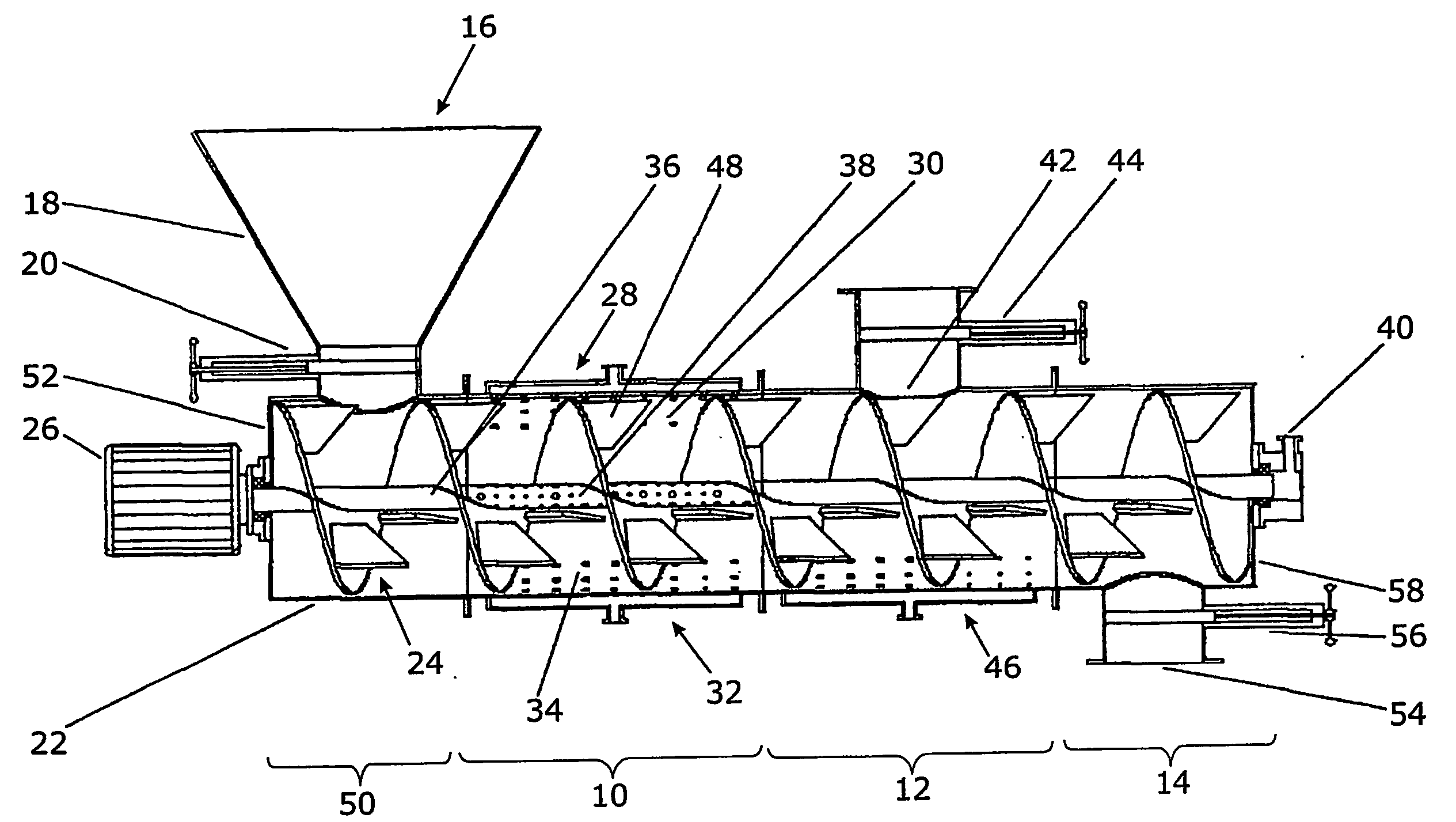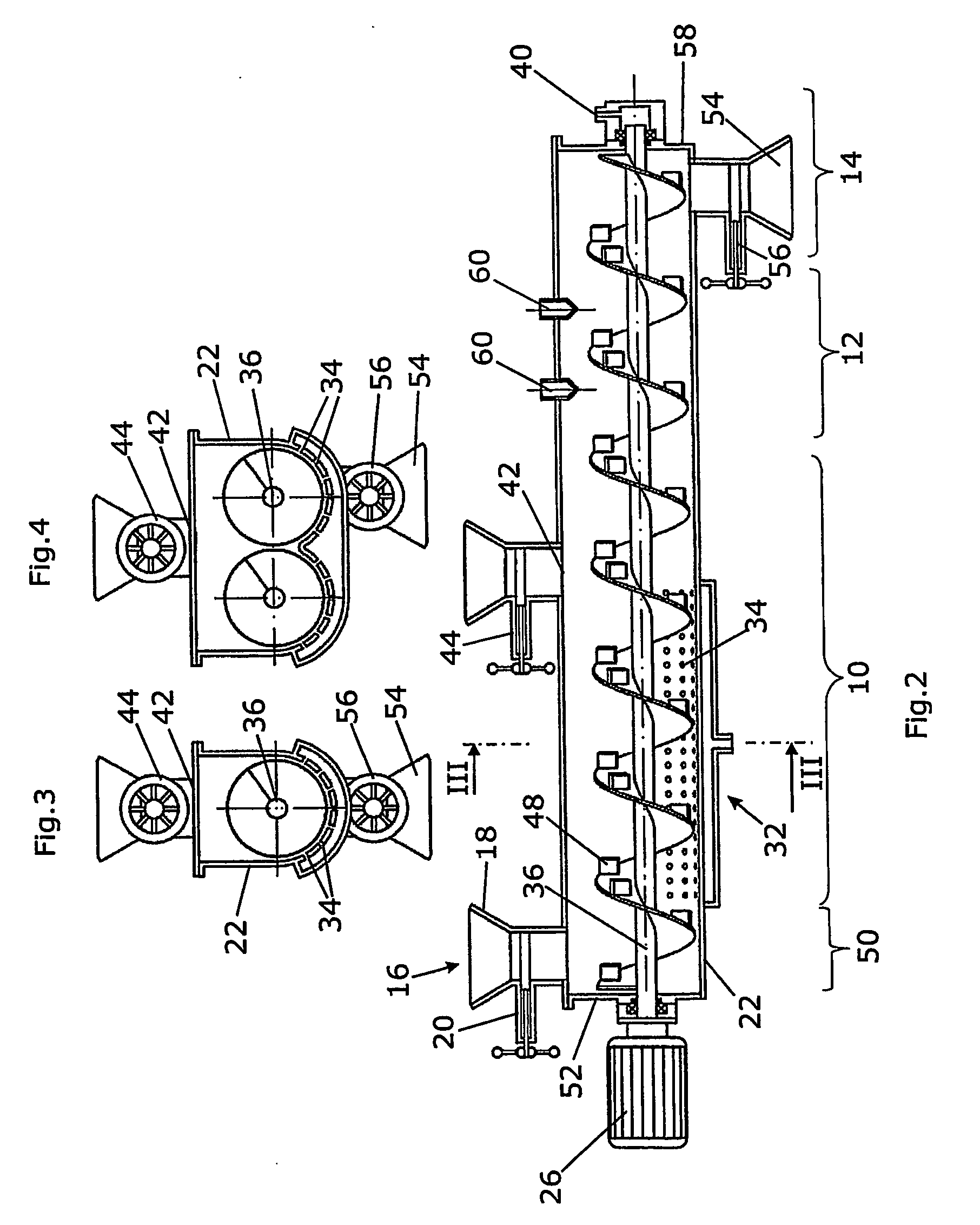Directed selective solid-phase culturing of stable microbial mixed populations for the continuous preparation of defined enzyme and metabolite mixtures
a technology of stable microbial mixed populations and continuous preparation, which is applied in the direction of biochemistry apparatus, enzymes, biochemistry apparatus and processes, etc., can solve the problems of long treatment time of chops, corresponding large space requirements for stack areas, and all these processes still have less than optimal cours
- Summary
- Abstract
- Description
- Claims
- Application Information
AI Technical Summary
Benefits of technology
Problems solved by technology
Method used
Image
Examples
example 1
Two-Phase Culture for Producing Hydrolase Mixtures for a Subsequent Enzymatic Extraction Process for Exhausted Sugar Beet Chips
[0164] A. Enzyme production: In a two-phase culture with an upstream inductive preculture, for preparing the precultures, ground (Retsch centrifugal mill: about 250 μm sieve mesh width) press beet chips / rapeseed meal, at 2% each, was added into 2% agar suspension+0.5% yeast extract (w / v), and after autoclavation, poured into Petri dishes (about 30 ml per Petri dish / 9 cm diameter). After cooling and drying for about 3 days at room temperature, the preculture substrates are inoculated with Penicillium chrysogenum, Eurotium amstelodami, Aspergillus niger, Aspergillus tubingiensis and Neurospora spec. Thus, a round piece of inoculum is punched out of one of each grown agar culture of the respective fungus by means of a cork borer and placed into a previously punched hole in the inoculation plate. The inductive preculture phase at about pH 5-6 and at a temperatu...
example 2
Hydrolysation of Grass Silage
[0167] A. Enzyme production: Two Aspergillus strains (niger, tubingensis) and one Neurospora strain (intermedia) were cultivated in a bioreactor according to FIG. 1 as follows: 1 kg rape extraction material was adjusted to a water activity of 0.98. The substrate was inoculated with 107 conidiospores / g substrate of A. niger, 108 conoidiospores / g substrate of A. tubingensis and 108 conoidiospores / g substrate of Neurospora intermedia. After 3 days of cultivation 200 g grass silage, which was cut into pieces smaller than 10 mm, as inducing target substrate was added. The water activity was adjusted to 0.99 by adding water and the mixture was in addition inoculated with 108 conidiospores of a Trichoderma strain (atroviride). After another two days the fermentation was stopped, the fermentation product was dried and homogenized using the above mention enzyme assays the homogenized product showed following activities per g dried material: Cellulase 80; Xylanas...
example 3
Hydrolysation of Sugar Beet Pulp
[0176] A. Enzyme production: Two Aspergillus strains (niger, tubingensis) were cultivated in a bioreactor according to FIG. 1 as follows: 1 kg rape extraction material was adjusted to a water activity of 0.99. The substrate was inoculated with 107 conidiospores / g substrate of A. niger and 108 conoidiospores / g substrate of A. tubingensis. After 3 days of cultivation 200 g sugar beet pulp as inducing target substrate was added. The water activity was adjusted to 0.96 by forced aeration and the mixture was in addition inoculated with 107 conidiospores of Neurospora intermedia. After another three days the fermentation was stopped, the fermentation product was dried and homogenized.
[0177] Using the above mention enzyme assays the homogenized product showed in following activities per g dried material: Cellulase 94; Xylanase 183; Pectinase 4; Amylase 1; Protease 1; Upase 19; unspecific esterase (FDA) 1430.
[0178] B. Hydrolysation of sugar beet pressed pu...
PUM
| Property | Measurement | Unit |
|---|---|---|
| Time | aaaaa | aaaaa |
| Time | aaaaa | aaaaa |
| Temperature | aaaaa | aaaaa |
Abstract
Description
Claims
Application Information
 Login to View More
Login to View More - R&D
- Intellectual Property
- Life Sciences
- Materials
- Tech Scout
- Unparalleled Data Quality
- Higher Quality Content
- 60% Fewer Hallucinations
Browse by: Latest US Patents, China's latest patents, Technical Efficacy Thesaurus, Application Domain, Technology Topic, Popular Technical Reports.
© 2025 PatSnap. All rights reserved.Legal|Privacy policy|Modern Slavery Act Transparency Statement|Sitemap|About US| Contact US: help@patsnap.com



